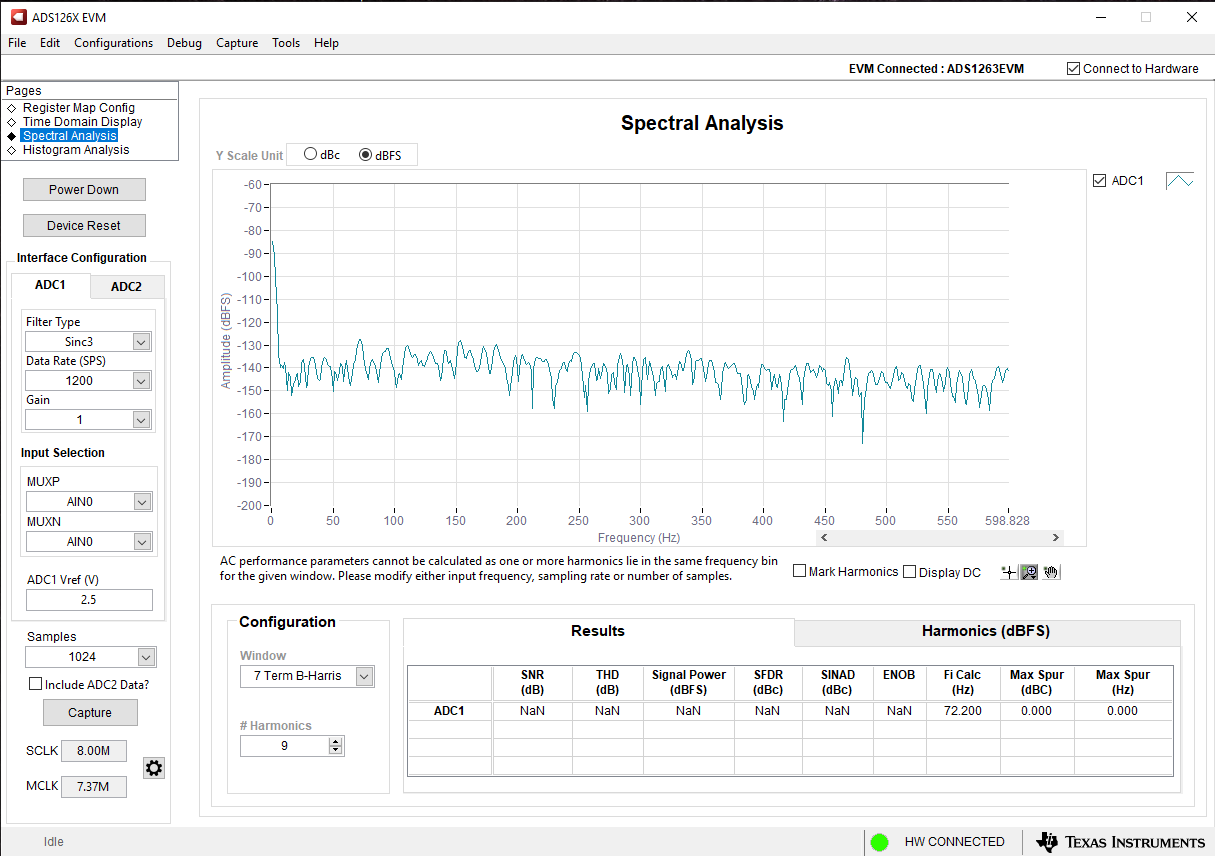SBAU206B april 2015 – may 2023 ADS1262 , ADS1263
- 1
- Abstract
- Trademarks
- 1EVM Overview
- 2Getting Started With the ADS1263EVM
-
3Analog Interface
- 3.1
Analog Input Options
- 3.1.1 ADS1263 Integrated Input Functions
- 3.1.2 Analog Sensor Connections
- 3.2 ADC Connections and Decoupling
- 3.3 Clocking
- 3.4 Voltage Reference
- 3.1
Analog Input Options
- 4Digital Interface
- 5Power Supplies
- 6Software Installation
- 7EVM Operation and GUI
- 8Bill of Materials, PCB Layout, and Schematics
- 9Revision History
7.4 Frequency Domain Display
Figure 7-5 shows the spectral analysis tool that evaluates the dynamic performance (SNR, THD, SFDR, SINAD, and ENOB) of the ADS1263. This dynamic performance is calculated by single-tone sinusoidal signal FFT analysis using the 7-term Blackman-Harris window setting. The FFT tool includes windowing options that are required to mitigate the effects of non-coherent sampling (this discussion is beyond the scope of this document). The 7-term Blackman-Harris window is the default option and has sufficient dynamic range to resolve the frequency components of a 32-bit ADC. The None option corresponds to not using a window (or using a rectangular window) and is not recommended.
 Figure 7-5 ADS1263EVM GUI Frequency Domain Display Page
Figure 7-5 ADS1263EVM GUI Frequency Domain Display Page